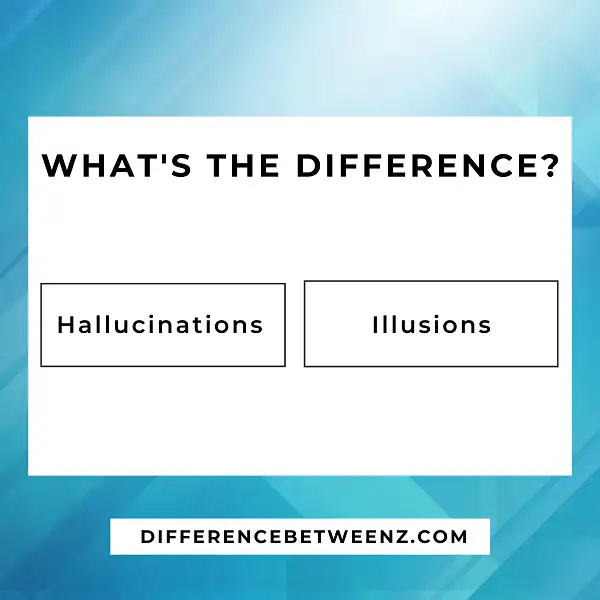Hallucinations and illusions are both perceptual abnormalities, but they differ in a few key ways. Hallucinations are entirely perceptual experiences, while illusions are created by the brain’s interpretation of sensory input. Illusions can be caused by factors such as optical illusions or cognitive biases, while hallucinations can be caused by medical conditions or drugs. Finally, hallucinations are usually transient, while illusions may last for extended periods of time.
What are Hallucinations?
Hallucinations are defined as sensory experiences that occur in the absence of an external stimulus. In other words, they are perceptions that are not based in reality. Hallucinations can affect any of the five senses, but they are most commonly associated with hearing voices or seeing things that are not really there.
While hallucinations are often associated with mental illness, they can also be caused by sleep deprivation, use of drugs or alcohol, or physical illness. Hallucinations can be frightening, but in most cases, they are harmless. However, if you experience persistent or severe hallucinations, it is important to seek medical help.
What are Illusions?
Illusions are false or misleading sensory experiences. They can occur in any of the senses, but visual illusions are the most well-known. Illusions occur when the brain is tricked into perceiving something that is not there, or perceiving something differently than it actually is. There are many different types of illusions, but they can generally be classified into two groups: optical illusions and cognitive illusions.
Optical illusions are caused by the way light interacts with the objects around us, while cognitive illusions are caused by our own brain processes. Illusions can be fascinating, perplexing, and even disturbing. But they can also teach us a lot about how our brain works to create our perceptions of the world.
Difference between Hallucinations and Illusions
Hallucinations and illusions are often confused, but they are actually quite different. Hallucinations are false or distorted perceptions that occur in the absence of an external stimulus. They can be visual, auditory, olfactory, gustatory, or tactile. Illusions, on the other hand, are false perceptions that occur in the presence of an external stimulus.
For example, a person with normal vision might see a distortion in a face that is actually caused by an asymmetrical haircut. Hallucinations can be caused by a variety of factors, including mental illness, sleep deprivation, use of certain drugs, and sensory impairment. Illusions, on the other hand, are usually caused by environmental factors such as light or sound waves bouncing off of objects in a certain way.
Conclusion
In short, hallucinations are a result of changes in the brain that cause sensory perceptions to be misinterpreted. Illusions, on the other hand, are created by stimuli that is present but is not actually real. It’s important to understand these differences when trying to diagnose mental health conditions and design appropriate treatment plans.


